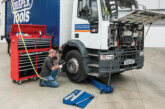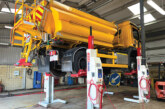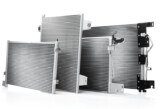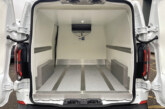Why must brake pads and discs be compatible?

Commercial vehicles experience a wide spectrum of use in service, and this has a direct bearing on the duty to which their brake system is subjected; and the operating temperatures that are reached. Matt Leeming, Juratek marketing manager, reports.
At the one end of the scale, vehicles can be running up and down the motorway hardly ever applying their brakes, while at the other, others could be on delivery constantly stopping and starting, some working as tippers and others on routes with long hill descents involving continuous brake application.
Brake temperature mapping of these very different operating conditions indicates peak temperatures can typically range from the relatively modest 200°C under light conditions of use, all the way up to 850°C during long hill descents.
The development of fully service compatible brake pads and discs has to recognise and cater for all of these possible conditions to ensure the resulting products that are offered for sale are safe, and durable. It is not really enough to simply carry out the mandatory UNR90 tests which only cover the basic braking effectiveness and fade and not the performance, durability and compatibility between brake pads and brake discs under the wide range of different service operating conditions.
The development of these fully rounded products usually starts with small scale trials covering basic performance, fade and wear, before moving to longer, more specialised (and expensive) tests such as simulated Alpine descents and vehicle field trials.
The development process involves many incremental product improvements, typically the development cycle can take a minimum of two years, from laboratory to marketplace. With the final products having undergone countless hours of exposure to the full range of speeds, pressures and temperatures that can be seen in service.
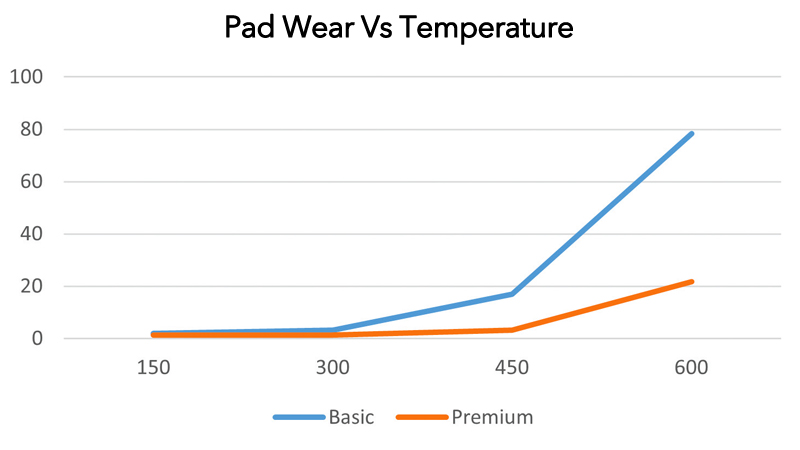
The typical wear (temperature curve is shown left), illustrates how pad wear (durability) is critically affected by increasing brake disc temperature – the higher the rubbing temperature at the interface of the pad and disc, the faster the rate of wear.
Premium stopping power
Basic pad grades, which are perfectly suitable up to medium levels of duty, wear at a much faster rate once the operating temperature exceeds 450°C for any length of time. This is where a better (premium) grade of pad containing higher temperature wear resisting ingredients in its formulation shows an advantage and though the initial cost may be more expensive, they frequently provide the end user with a more cost-effective fitment.
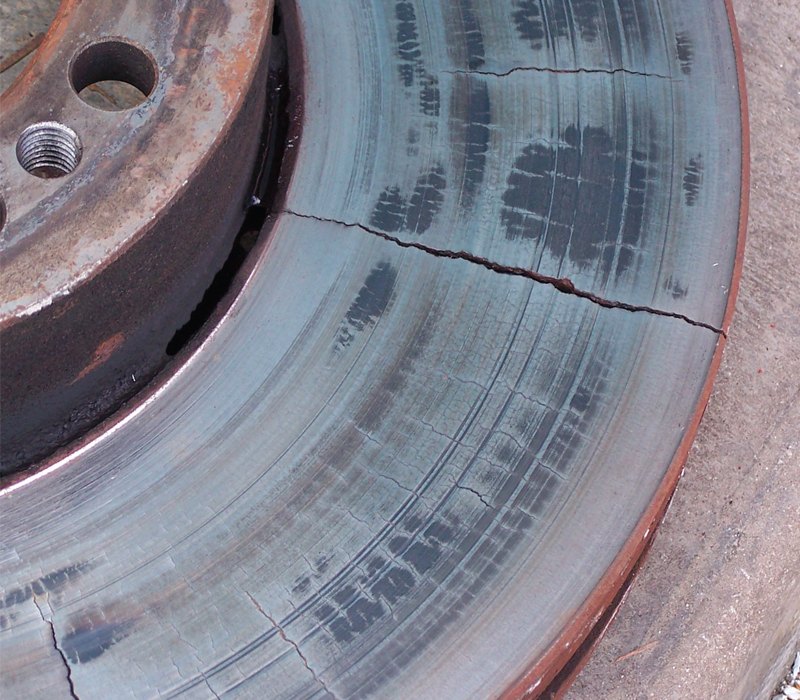
The above image shows a poor quality brake pad tested over the temperature range 100 > 600°C disc temperature and is structurally incapable of coping with the full range of braking duties.
The image below shows a premium quality brake pad tested over the same temperature range (100 > 600°C) and fully capable of coping with the full range of service conditions.
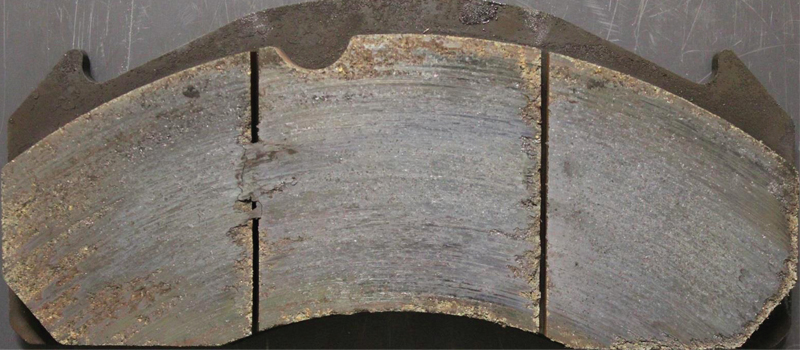
Cracking stuff
Higher temperatures and speeds can also often result in thermal crazing and cracking of the brake disc, resulting in the need for the brake discs to be replaced to ensure safe operation. This is why the compatibility of the pad and disc is important and needs to be included as a part of the brake pad development process.
If the pad is too hard or too stiff the braking load and resulting temperature build up will be more localised rather than being distributed uniformly over the braking path, leading to “hot spots” on the surface of the disc and eventual rupture (cracking) of the disc surface. The compatibility of brake pads and discs under different operating conditions is one of the many factors covered during Juratek’s development of both its brake pad grades.


